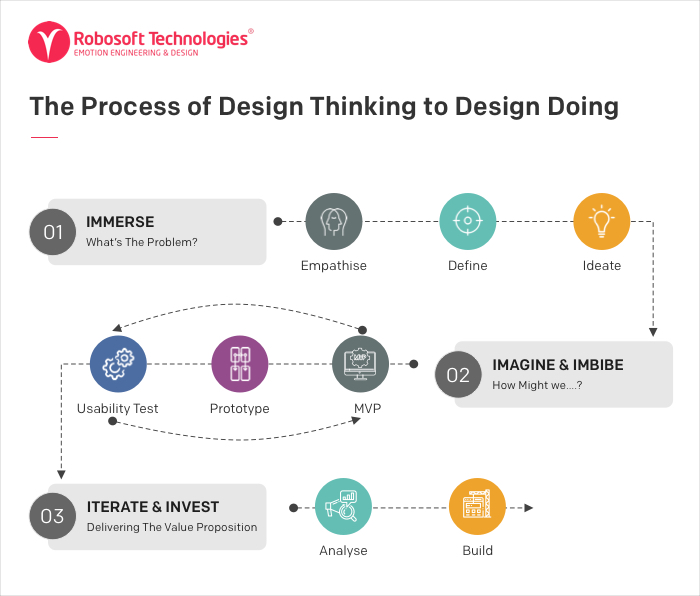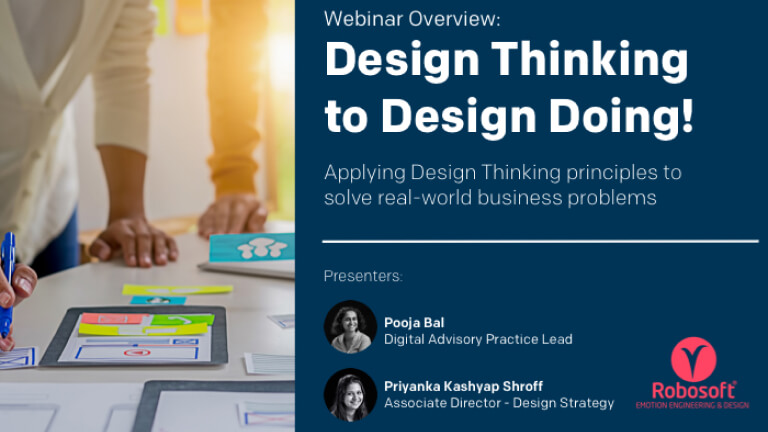As enterprises face the new-order of the world, they are also gearing up for the evolving business challenges that are likely to get more complex in the coming months. Design Thinking principles can help businesses understand consumers better, empathize with them, and uncover valuable insights about their stated and latent needs & pain points.
In this context, in our first webinar of the Design Thinking series – ‘Facilitating Remote Design Thinking’ we discussed how remote working and Design Thinking which are often viewed as two separate entities can be integrated together to drive-in measurable results.
Taking the conversation ahead, the second webinar in this series – From Design Thinking to Design Doing, was aimed at discussing how the rapidly evolving business challenges present an opportunity for enterprises to apply Design Thinking principles to gain insights into customer pain points, understand user behavior and thus solve real-world problems for enterprises.
In this webinar, Pooja Bal, our Head of Digital Advisory Practice and Priyanka Shroff our Associate Director took participants through an in-depth process of how to progress from Design Thinking to Design Doing using product management tools and techniques. During the course of the webinar, they shared insightful examples based on their rich experience in Design Thinking with clients in various domains across the globe.
The discussion helped participants learn:
- The new mindset – the paradigm shift in the outlook that is required to move from a static to the dynamic transition of Design Thinking and understand how it can be put into action, beyond theory.
- The process of ‘Design Thinking to Design Doing’ – decoding the how of the Design Thinking process. This process is divided into three phases:

Phase 1: Immerse: Empathize, Define, Ideate
Empathizing allows in setting aside preconceived assumptions and gain insights into the user’s real needs. In the subsequent steps these insights are analyzed and the core problem is defined. The final step of this phase is ideating; which can open up innumerable possibilities to innovate and build a product.
Phase 2: Imagine and Imbibe: MVP, Prototype, Usability Testing
Creating an MVP (Minimum Viable Product) which is the smallest possible version of the product that can be used to run an experiment and test a hypothesis to understand the feasibility of the product. The Prototyping and Usability testing steps of this phase are often done concurrently and can provide immense opportunities to learn faster about the end-user and apply those insights while developing the final product.
Phase 3: How to iterate and Invest: Analyze, Build, Test
This phase focuses on how to build and scale the product using Agile and DevOps concepts.
- Business impact – examples of how this process enabled few of our clients meet business goals, increase profitability, and achieve the desired numbers.
In conclusion, the journey from Design Thinking to Design Doing is an iterative process that helps enterprises understand their user pain points, conduct faster experiments, and finally build a product that drives business results.
Here’s the webinar video for detailed insights on the Design Thinking to Design Doing process.
If you’d like to know more about how to drive the remote design thinking process at your enterprise, please feel free to drop me an email at [email protected].





